
Sichuan is best known around the world as home to pandas, which are not the only pride of the province.
In Tangjiahe Nature Reserve, northeast border of Sichuan Province, many unique mammals and birds can be found in the mountain forests.
Wild boar
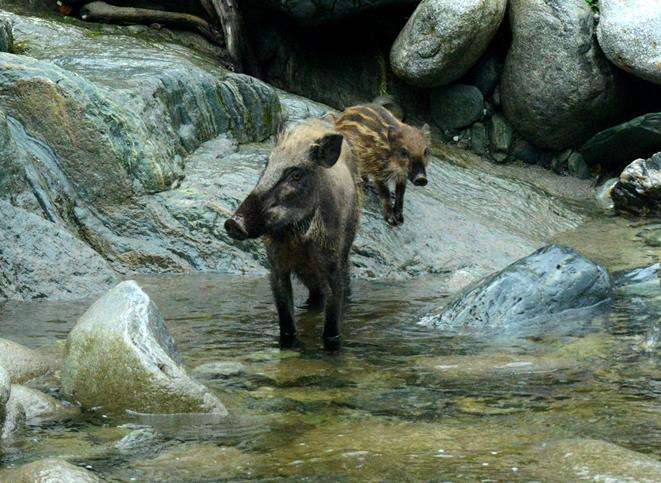
An adult wild boar walks to the stream with a piggy behind. /CGTN Photo
The wild boar or Eurasian wild pig is a species wildly spread through Eurasia, North Africa and the Greater Sunda Islands.
Unlike many other animals facing habitat loss and population shrinking, human intervention has taken this species to further places. As a result, wild boar is a mammal with one of the widest ranges in the world.
Damselfly
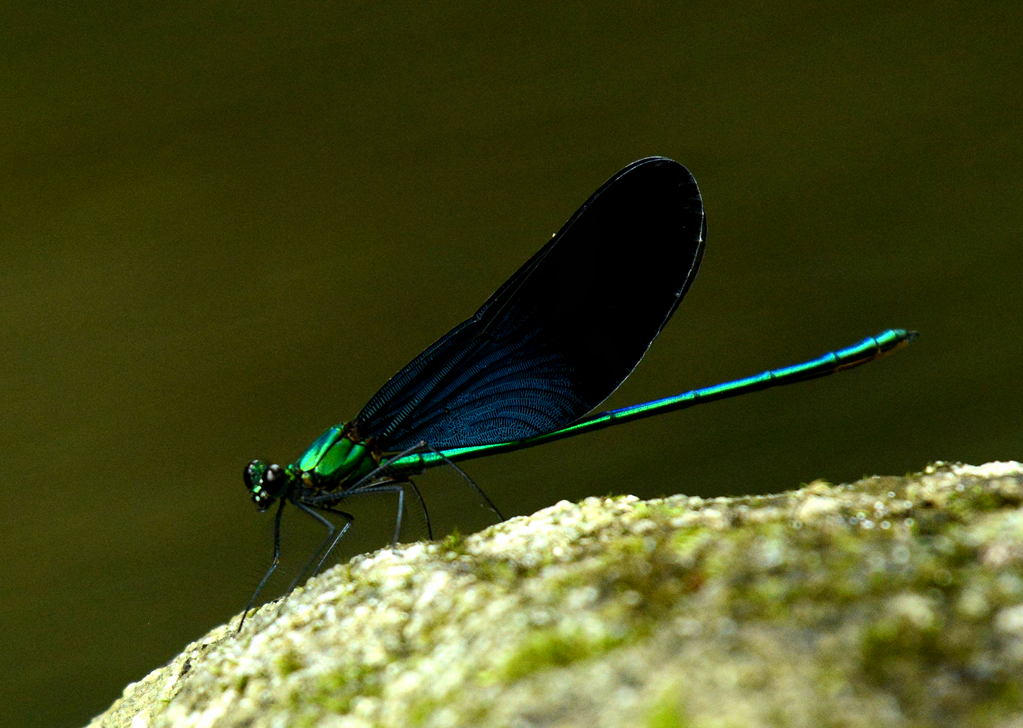
A little Damselfly rests on the rock. /CGTN Photo
From appearances, damselflies look like dragonflies and they are in the same order – Odonata – but in different suborders. You can distinguish them from their eyes, body shape and the way they rest.
Damselflies have smaller eyes and a slenderer body. When resting, damselflies put their wings together above the bodies while dragonflies keep their wings apart.
Takin
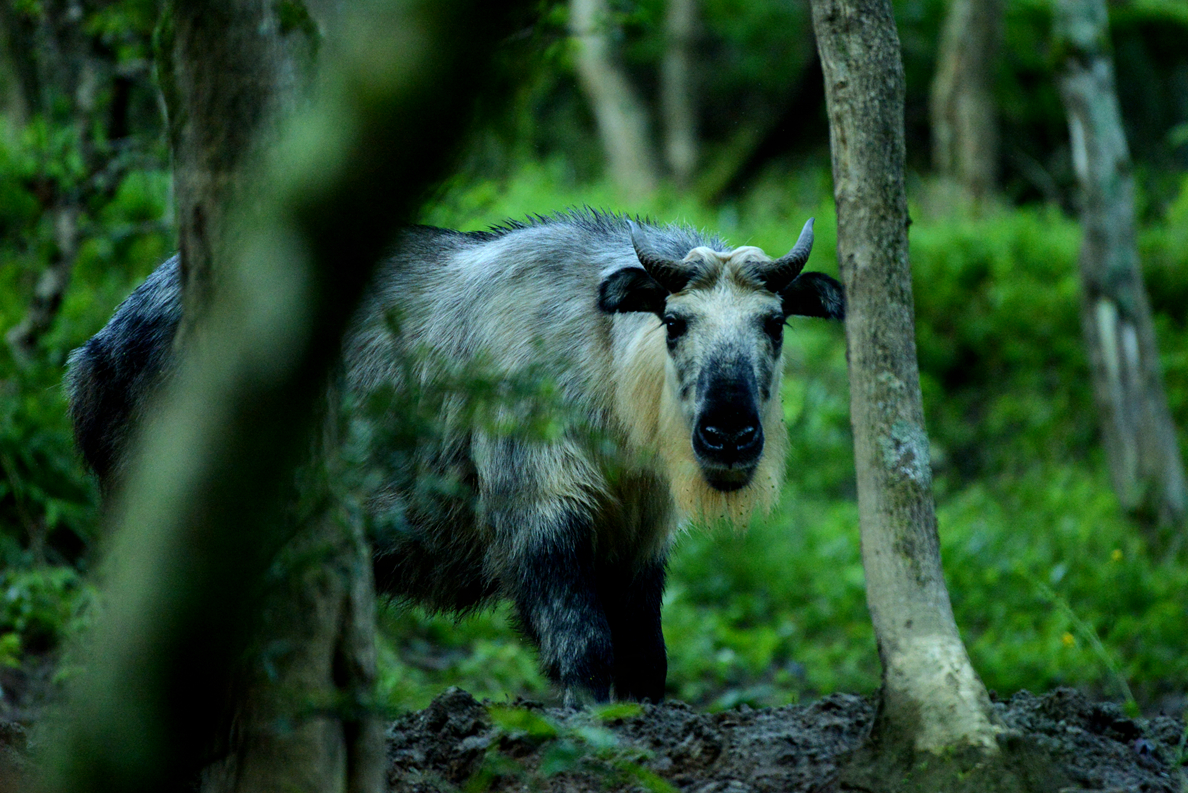
A takin walks in the woods. /CGTN Photo
If asked what is an exotic, rare mammal in China, many would list the giant panda, the red panda and the golden snubbed monkey, but there is at least one that's also the largest and heaviest: the takin.
This bull-like ungulate can weigh 350 kilograms and has a stout, stocky figure with two short horns. They are better climbers than their appearance suggests, as the they usually inhabit areas around several thousand meters in the mountains. China is home to three of the four takin subspecies, all of which are under first-class protection.
Chinese muntjac
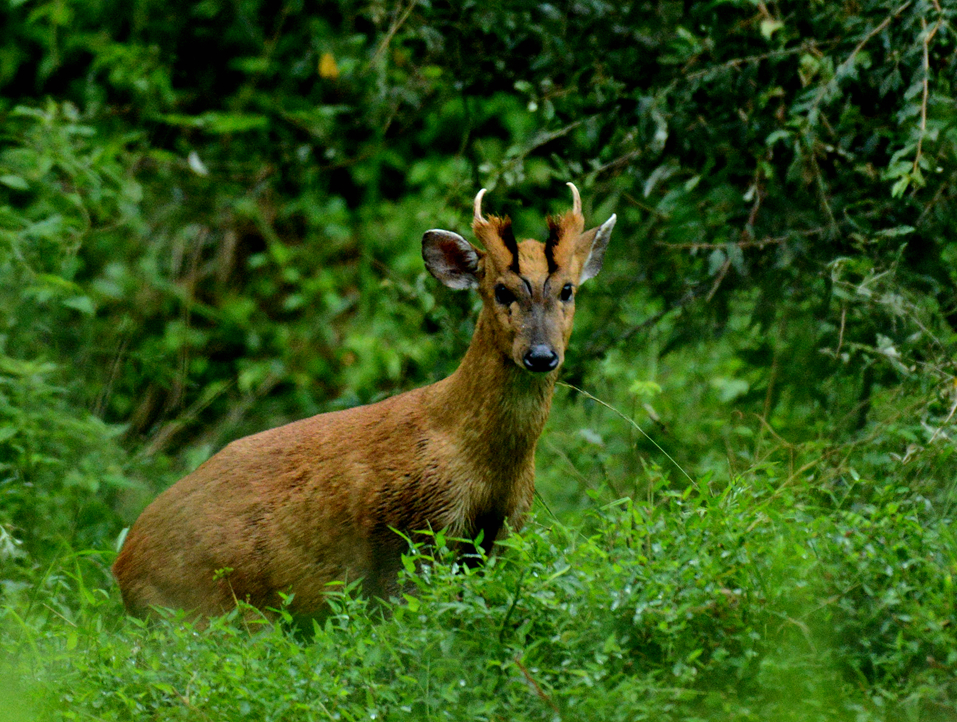
A Chinese muntjac forages in the bushes. /CGTN Photo
The Chinese muntjac, also known as the Reeves' muntjac, looks like a short-antler mini deer. It is indeed closely related to their big deer cousins.
It weighs only about a dozen kilograms and measures less than a meter long. It is easily mistaken as a canine, not only because it barks (it is also called barking deer due to this), but because male Chinese muntjac have canine teeth which can be five centimeters long. They are used for fighting rivals in territory battles.
Chinese rock squirrel
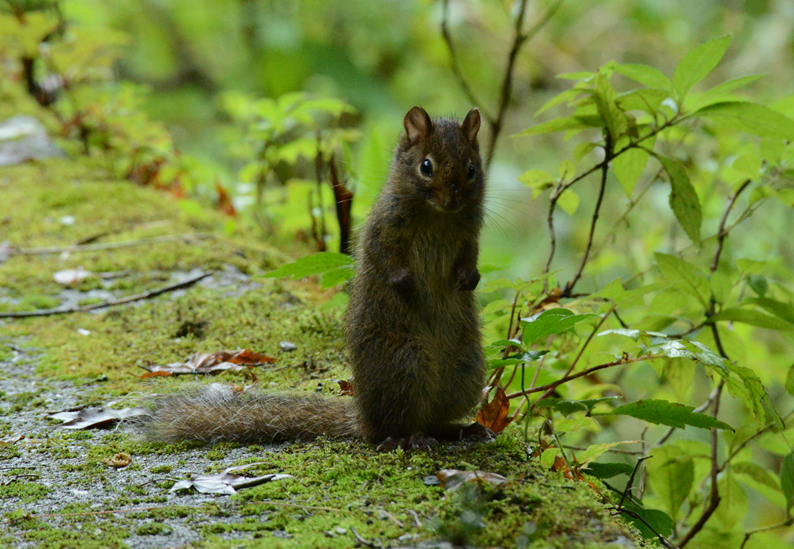
A Chinese rock squirrel stands still in front of the camera. /CGTN Photo
The Chinese rock squirrel, also known as Père David's rock squirrel, is endemic to China. Its grey fur helps the squirrel perfectly camouflage in the rocky areas. How can you find it? Try looking for the cute white eye-rings.
(All photos courtesy of Ma Wenhu from CGTN Nature filming crew; The crew is filming in Tangjiahe Nature Reserve.)
(If you want to contribute and have specific expertise, please contact us at nature@cgtn.com.)

Copyright © 2018 CGTN. Beijing ICP prepared NO.16065310-3
Copyright © 2018 CGTN. Beijing ICP prepared NO.16065310-3